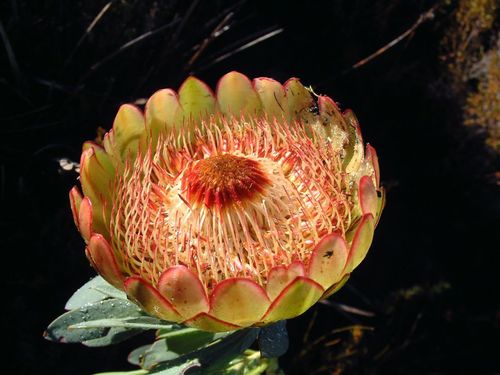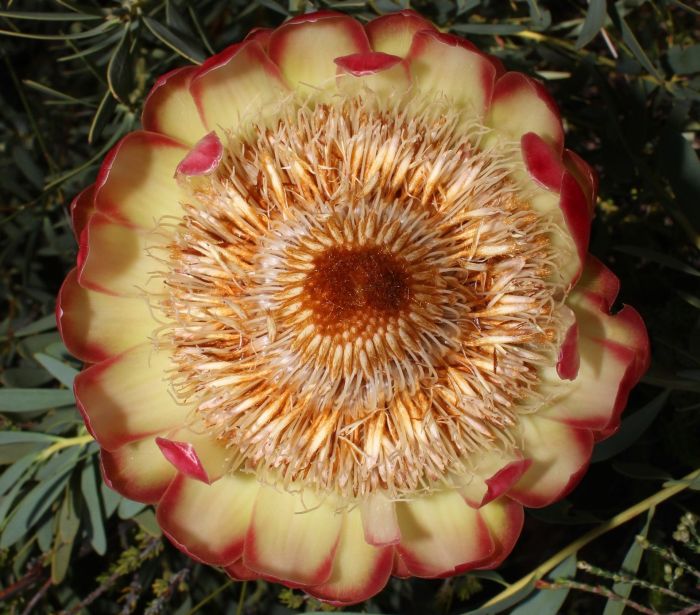Protea namaquana - extremely Rare - Kamiesberg sugarbush
Protea namaquana - extremely Rare - Kamiesberg sugarbush
Couldn't load pickup availability
Protea namaquana, also known as the Kamiesberg sugarbush, is a critically endangered flowering plant endemic to South Africa's Kamiesberg mountains. This dense shrub is a distinctive member of the Protea genus, recognizable by its downward-hanging, cup-shaped flowers that have a strong, yeasty odor. Its population has dramatically declined in recent decades, making its conservation status a critical concern.
- Appearance: An upright, rounded, and densely branched shrub that grows to a height of 1 to 2 meters.
- Leaves: The leaves are hairless, pale green, upward-pointing, and have rounded tips. They are 31–60 mm long and 4–9 mm wide.
- Flowerheads: The distinctive flowerheads are dull carmine (a purplish-red color) and hang downwards. When open, they are shallowly bowl-shaped, about 90–100 mm in diameter, and emit a strong, yeasty smell.
- Flowering season: The plant flowers during the winter and spring, from June to September.
- Endemic to South Africa: Protea namaquana is only found in the Kamiesberg mountains of Namaqualand in the Northern Cape province.
- Restricted range: The species has an extremely limited range, with a total distribution of just 18 to 38 square kilometers.
- Specific location: It grows on the upper granite slopes of the Kamiesberg mountains at altitudes between 1,200 and 1,600 meters above sea level.
- Climate: The region is a semi-desert with dry summers and winter rainfall, though coastal fog and heavy dew also provide moisture.
-
Fire: The species is severely threatened by an "inappropriate fire regime." This includes fire exclusion near agricultural land, which inhibits seed release, and overly frequent burning in other areas, which kills mature plants. As a reseeding species, its seeds are only released from fire-resistant heads after a fire.
- Climate change: Increasing temperatures and severe droughts are also leading to higher mortality rates.
- Habitat loss: Transformation of habitat for agriculture poses another significant threat.
- Vulnerability: The small and unprotected nature of the remaining population makes the species highly vulnerable to extinction if habitat degradation and other threats continue.
Price is for 1 seed


Collapsible content
Fair Use Disclaimer
Our website may contain content not authorized for use by its owner but use of this material falls under the guidelines of fair use (They are for educational purposes only to show the plant only).
If you want to find our more or own any images displayed on our website and disagree with our assessment it constitutes 'fair use' please click here.


